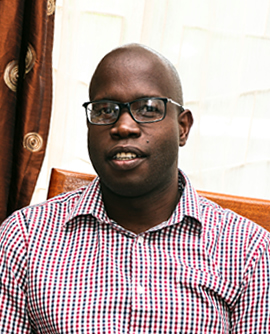Daktari Nitie: My experiences as a junior doctor and researcher
 As a junior medical doctor, many times when I visited my parents in rural Western Kenya, I would be crowded out of my parent’s house by community members seeking care, having gotten wind of my visit. “Daktari Nitie” (the doctor is around) – the message would be passed around the village very quickly. I was ill-equipped to offer service during these visits, but in subsequent visits, I started carrying my stethoscope, a blood pressure machine, and a patella hammer. I often sent my patients for investigations or with prescriptions to the nearest town: they would cover the costs of travel and get back to me with the results or procure the drugs.
As a junior medical doctor, many times when I visited my parents in rural Western Kenya, I would be crowded out of my parent’s house by community members seeking care, having gotten wind of my visit. “Daktari Nitie” (the doctor is around) – the message would be passed around the village very quickly. I was ill-equipped to offer service during these visits, but in subsequent visits, I started carrying my stethoscope, a blood pressure machine, and a patella hammer. I often sent my patients for investigations or with prescriptions to the nearest town: they would cover the costs of travel and get back to me with the results or procure the drugs.
Although poor, my people were willing to pay for service because ill-health hindered their livelihoods and made for miserable lives. The nearest public health facility was a distance away, and many times did not have medicines. They were served by a clinician who would seldom report to work or be rude and intoxicated during working hours. They had no alternatives. Some situations were heartbreaking: the widower who had difficulties swallowing food which I figured had an advanced stage of cancer of the food pie; the young girl who kept to herself and her infant baby because she “leaked urine” on after a difficult labor at a young age; the young mother who had been sent away from her marital home because she was “devil possessed” but actually had epilepsy and bipolar personality disorder – it didn’t help that her child had severe developmental delay. Many girls had dropped out of school because of early pregnancy and struggled as young mothers while dealing with the associated stigma. With certainty, every year, many girls would drop off.
I mulled over the idea of setting up a clinic to offer care to my community and others in a similar setting. For a while, I focused on my post-graduate studies and doctoral research work, focusing on children with coma and other severe illnesses. I remained aware of the very broken health system that handed me children with severe illnesses and brain damage as my study subjects. An abrupt change in employment was the ignition that saw me start ARA as an organization that could accommodate my research interests and helps me implement programs to promote access to healthcare to under-served communities.
First was a center in Malindi that would later accommodate a successful epilepsy outreach program. Then Moses joined, and we would try Ngong, Eastleigh, and Tassia in Central Kenya: the first two failing miserably. Even so, we saw an opportunity to implement a health service model targeting other rural settings – a place we felt we could have a great impact by involving the community and providing sustainable quality healthcare. Since then, we have designed and re-designed our rural healthcare delivery model, harnessing communities, and providers’ strengths to improve access to quality care in rural settings across Kenya.
Moses led the design of a clinic and patient management technology (STONE-HMIS) that has grown into a standalone health management information system, assisting inpatient treatment, tracking and follow up, stock control of pharmaceuticals and other medical supplies, and revenue tracking. STONE is currently implemented across all our kiosks and is also used in 13 public and faith-based health facilities. We have learned how to effectively deploy technology solutions amid struggles with erratic power supply in rural settings, poor network connectivity, and human resource resistance to change. We’re still learning.
In this venture, we could never do what we do without the strength, determination, and consistency of our community partners.
